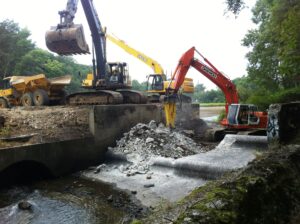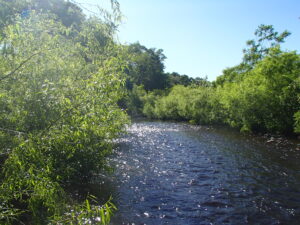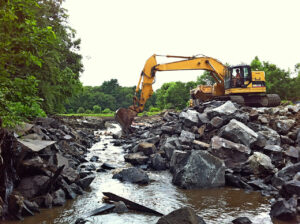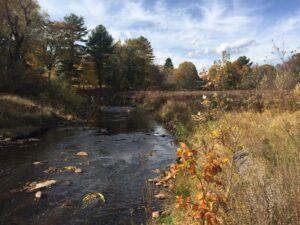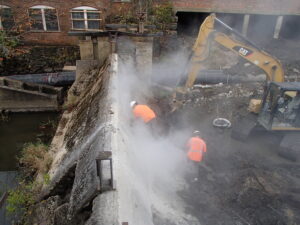The Taunton River Watershed is a restoration and protection priority for many federal, state, and local organizations. The Taunton watershed’s nursery and foraging habitats support herring, rainbow smelt, silversides and other fish that play a critical role in supporting marine food webs. Striped bass and bluefish, which enter the river to feed on these species, are a significant recreational and commercial fishery. The upper River provides spawning habitat for migratory fish, is home to the Northern Redbelly Cooter (a federally-listed turtle), the globally rare bridle shiner, river otters, and seven freshwater mussel species. The Massachusetts Division of Marine Fisheries considers the Taunton River watershed to be a sentinel river for river herring.
Dam removal is a priority restoration action for the Taunton River. Dam removal restores fish passage; improves water quality; and restores the natural transport of sediment, water, and organic material. Dam removal also restores floodplain habitats that were submerged by the impoundment formed by the dam. Floodplains provide habitat for native plants and wildlife and help buffer and store flood flows.
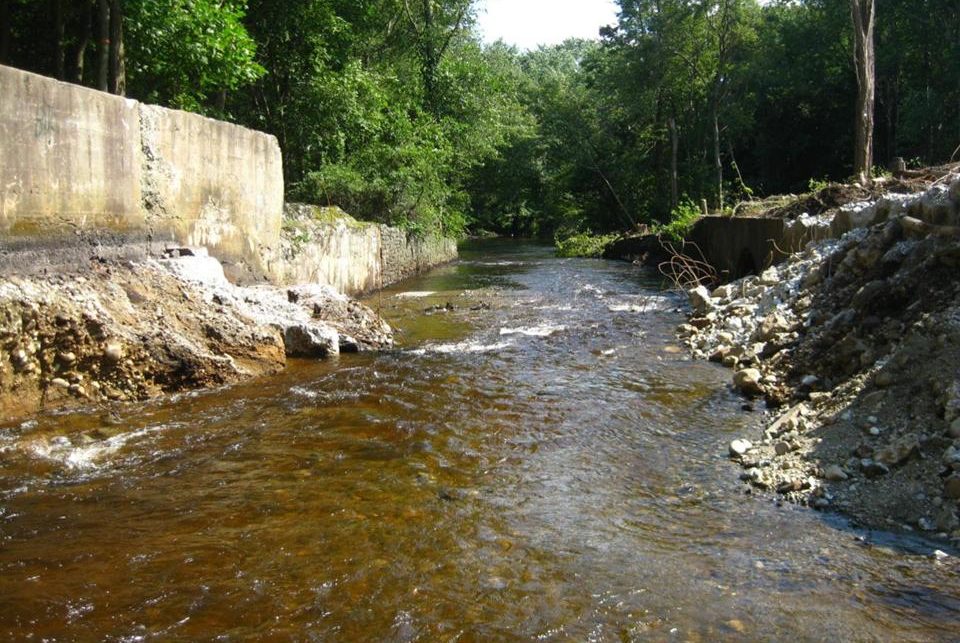
Dam removal is particularly important for the migratory fish that use the Taunton River. The Taunton River and its tributaries support one of the largest populations of river herring in southern New England. One such tributary, the Nemasket River, consistently exceeds over 500,000 alewives annually, and the annual count has reached one million fish during some years. Another tributary, the Town River, supports 50,000 – 100,000 river herring per year. American eel are abundant in the watershed also. Yet, despite healthy river herring runs on some tributaries, many other tributaries to the Taunton River are blocked by dams, thus limiting the overall productivity of river herring and American eel in the watershed.
TRSC and many other organizations have been working together since 2007 to remove obsolete dams by providing funding and technical assistance. Some of the organizations involved in this important work include Cities and Towns such as Taunton, Bridgewater, and East Bridgewater; federal agencies such as the National Oceanic and Atmospheric Administration and the US Fish and Wildlife Service; state agencies such as the Division of Marine Fisheries and the Division of Ecological Restoration; and non-profit organizations such as the Nature Conservancy. The TRSC provided grants to the following projects, leveraging millions of dollars in federal and state funds:
- The Hopewell Mills, Whittenton, and West Britannia Dam Removals on the Mill River in Taunton, which opened over 30 miles of stream and over 300 acres of spawning habitat for river herring;
- The Barstow’s Pond Dam Removal on the Cotley River in Taunton;
- The removal of the Cotton Gin Mill Dam on the Satucket River in East Bridgewater; and
- The removal of the High Street Dam in Bridgewater.
